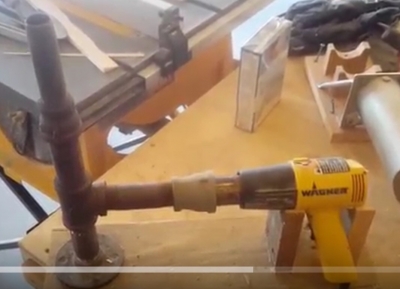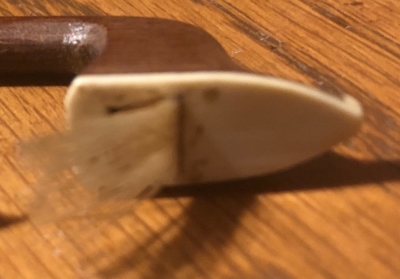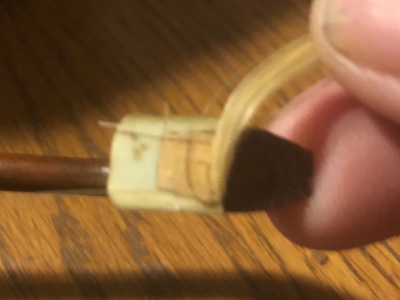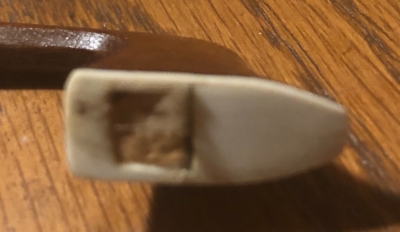Welcome to our forum. A Message To Our New and Prospective Members . Check out our Forum Rules. Lets keep this forum an enjoyable place to visit.
Currently working on errors from the latest (SimplePress) forum update. Many issues have been resoled and others are being worked on. Thank you for your patience.
 Topic RSS
Topic RSS



 (0 votes)
(0 votes) Regulars
 Offline
Offline
The purpose of the bow tip is obviously to protect the tip. The liner gives added strength to the wood grain. In the age before plastics and synthetics bow tips on older bows were made for the most part using ivory or silver on the expensive ones and bone or shell on the more common ones. Most liners were ebony. I have a lot of bows that need new tips. On the student level bows I’ll probably use a synthetic liner with a plastic tip. On the older ones I am still thinking of using a synthetic liner for its strength properties and using bone for the tip. Not sure what kind of bone is good though.
On nicer ones I think I’ll use an ebony liner with a mammoth ivory tip. Also considering fossil walrus ivory.
Any thoughts?
Regulars
 Offline
Offline

Hi Steveduf and others. Bone is difficult to adequately shape and glue to head. The ivory sources you suggested is more elastic (similar to that of a finger nail) and takes glue well. I suggest that you substitute a synthetic material called tip armor for the less expensive bows. I hear good things about it and the Fiddlerman Shop uses it. The expense is minimal (about $4.50 per tip).
Slightly off topic but since when has that ever stopped us. Securing the head to the tip can be a devil’s adventure and I have little faith in using wound string as a clamp. You might want to make a few of these clamps.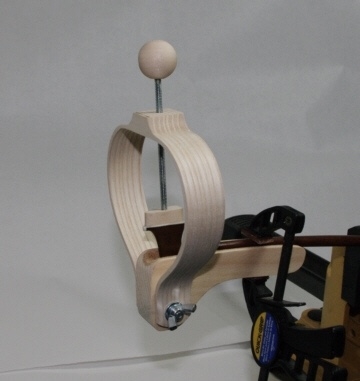
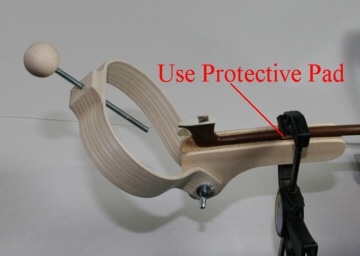
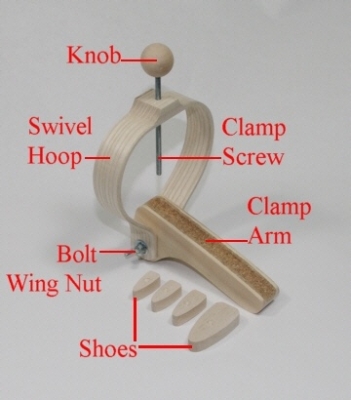
Success is the progressive realisation of a worthy ideal. —Earl Nightingale.
Regulars
 Offline
Offline


On the better bows, how about silver (or stainless) tips? Seems there's been a trend in that direction ever since the ivory ban. The Arcus starter bows have stainless steel tips but the next models up use silver, for eg..
Also seems there can be confusion between fossil ivory and banned African elephant tusk ivory.
https://news.nationalgeographi.....-poaching/
Hence New York and New Jersey have also banned the fossil ivory.
Regulars
 Offline
Offline

Regulars
 Offline
Offline

Hi @@bocaholly and others. It would be difficult to carve the profile of the hair socket with stainless steel. Silver is prone to tarnish (unless plated). Nickel and nickel silver would be excellent for the task. I have thought of repurposing used aluminum cans for violin bow tips because they come in such an array of colors (but only on student grade bows).
Success is the progressive realisation of a worthy ideal. —Earl Nightingale.
Regulars
 Offline
Offline


Member
 Offline
Offlinebocaholly said
Why stop at just the bow tips, @Irv
https://franciscosheuat.com/co.....ions/92717
If they had been a violinists, this looks like it would have been a good match for Elvis, or perhaps Liberace.
If I don't have time for a short post, I'll write a long post - (adapted from Mark Twain)
Regulars
 Offline
Offline
@bocaholly , @Irv
I like the looks of Armor tip a lot. I’ve been reading about these this morning, hoping to find a place to get a good price on a quantity. I think they would be ideal for the student bows at school. The metal tips make me nervous because of the pinning process, I would be afraid of ruining a bow. I think I will still use fossil ivory on a few of the bows that I want to be really nice.
@Irv I like the idea of the jig you pictured, I was looking at something similar last night on a website. I think I will have to make one. LOL
@Mouse not a bad idea...I definitely think that a few can be recycled, the tips and mortises vary but I’m sure there might be a match here and there.
Regulars
 Offline
Offline

@steveduf , @Mouse , et. al.
I have not found a source for bulk armor tips. Please post if you find one.
The heat transfer of the hot air wood bender would likely be more efficient if a stainless steel swarf pot scrubber was placed inside pipe.
I think that deer and elk antler would make a good material for bow tips. Cheaply obtained from a pet store. There is also a marble type dense plastic that was used to make sinks and counter tops called corian (or similar).
The nice thing about using aluminum cans is that the interior surface is already supplied with a resin which should readily accept glue. No pins required.
cid, I think that it would be difficult to recycle tips from other bows due to their various geometric surfaces. Good thought regardless.
Success is the progressive realisation of a worthy ideal. —Earl Nightingale.
Regulars
 Offline
Offline
Regulars
 Offline
Offline

Hi @steveduf and others. I google searched deer antler violin bow tips and did come up with a forum thread where someone stated interest. Not sure if ever done. I sure like the idea and it is certainly a renewable resource (antlers are shed yearly).
Corian machines easily and transmits sound well. Very impact resistant. Glue retention is likely not as good as deer antler.
Success is the progressive realisation of a worthy ideal. —Earl Nightingale.
Regulars
 Offline
Offline
Regulars
 Offline
Offline

My vote would be ivory. It was very plentiful then and not very expensive.
On the deer antler idea, if you angled a piece and sawed it with a circular slotting saw in a milling machine, I bet that you could get 3 to 4 violin tips per disk and about 10 disks per inch thickness (including waste). The dust removal system would have to be very effective because I would not to breathe the dust.
Success is the progressive realisation of a worthy ideal. —Earl Nightingale.
Regulars
 Offline
Offline
@Irv
On larger antlers I’d have to chase the perimeter, as you near the tip, the porosity goes away. I have done a little scrimshaw on antlers and have cut them both wet and dry. Wet you get a creamy slime and dry smells like burnt hair. I need to cut a slice and see if it’s flexible enough. I am still leary of that.
Regulars
 Offline
Offline




Off the subject but dear antlers make a great saddle for a mandolin, I have one on mine and it gave it a lot more volume, works good for nuts and saddles on guitar also. I have toyed with graphing one onto the top ofof violin bridge and carving it down and trying it to see if it makes a difference. Maybe someday
Mark
Master the Frog and you have mastered the bow.
Albert Sammons
Regulars
 Offline
Offline

I have seen several mandolin bridges made of deer antler, which is a lot larger than a bow tip. I believe that the points on the antler are mostly solid, and the connection point with the skull is completely solid.
Elk, moose, and long horn steer are other possibilities.
I have, what I have always been told, a killer whale tooth (I had an ancestor in the trade). Very yellow in color. I have my doubts on the utility of that stuff.
I don’t see a lot of utility gained from an ebony layer between the head and the tip. It is pretty.
Success is the progressive realisation of a worthy ideal. —Earl Nightingale.
Regulars
 Offline
Offline
Regulars
 Offline
Offline

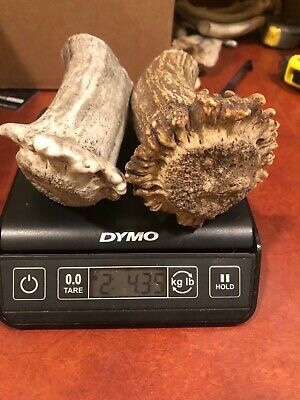 Was looking over auctions last night. Saw a pair of moose antler bases (about 6 inches in length each) for about $60. I bet you could make plenty of tips from them. Going to the local pet store and see if they have a antler base to experiment.
Was looking over auctions last night. Saw a pair of moose antler bases (about 6 inches in length each) for about $60. I bet you could make plenty of tips from them. Going to the local pet store and see if they have a antler base to experiment.
Success is the progressive realisation of a worthy ideal. —Earl Nightingale.


 Log In
Log In Register
Register





